Hammerhead, Orca, SSGN
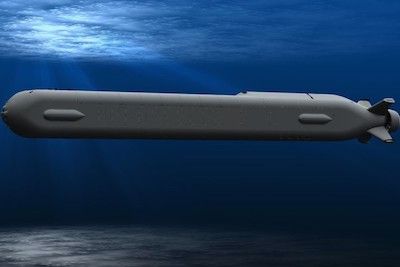
The Boeing Orca Extra-Large Unmanned Underwater Vehicle (XLUUV).
With great power competition driving shifts in weapons priorities, offensive mine warfare, long neglected since World War II, is on the cusp of dramatic change both within the United States Navy, and within the navies of U.S. adversaries as well.
During recent testimony before the House Armed Services Committee, VADM James Kilby, Deputy Chief of Naval Operations for Warfighting Requirements and Capabilities (N9), made some interesting statements regarding the Orca XLUUV:
“We are pursuing that vehicle because we have operational needs from a combatant commander to go solve a specific problem.”
“The XLUUV ... is a migration from the Echo Voyager from Boeing with a mission module placed in the middle of it to initially carry mines” [emphasis added]
It isn’t surprising that the USN would place offensive mining high on the list of priorities for the Orca. What is surprising, however, is that the vehicle's development is being largely driven by it. While the XLUUV program was established to address a Joint Emergent Operational Need (JEON), the exact nature of that need has been somewhat unclear. Since inception, the XLUUV CONOPS has encompassed a wide range of missions, including ISR, IPOE, ASW, MCM, ASuW, EW, and "Payload Integration" - i.e. undersea logistics or “trucking” in smaller UUVs, seabed infrastructure, such as energy and data transfer stations, or effects, both non-kinetic and kinetic (i.e. mines). But given the U.S. Navy's atrophied mine warfare capability, coupled with the technological complexity of autonomous mine laying operations, it seemed unlikely, though not impossible, that the XLUUV would be tasked with offensive mine warfare right out of the gate. More likely was anti-submarine warfare, or ISR, with the Orcas augmenting manned undersea platforms to enhance sensor coverage and provide persistent, wide-area distributed situational awareness to pose a dilemma for Red submarines. It’s quite clear now, however, that the JEON is in fact offensive mining.
Though Kilby was somewhat (perhaps deliberately) vague regarding the combatant commander (COCOM), he is referring to INDOPACOM, and the specific problem is PLAN submarines. While perhaps not as urgent a need, EUCOM could just as easily be a possibility, to deter Russian submarine incursions through the GIUK gap, to prevent their freedom of movement in the High North, to bottle up Northern Fleet boats inside the Kola Bay, or to contain Pacific Fleet boats within Avancha Bay. And not only Russia’s increasingly quiet and lethal SSNs (Akula), SSGNs (Yasen-M), and SSBNs (Borei II), but also special-purpose seabed warfare boats (Belgorod), as well as the planned Khabarovsk-class boats, purpose-built to carry the Poseidon intercontinental nuclear-powered/armed UUV/torpedo. (Another possibility, though not as likely at this time, would be to intercept Poseidon itself.)
Given the opaque nature of undersea warfare, it's interesting that Admiral Kilby would go out of his way to underscore the XLUUV's initial mission in a public forum. (The question, posed by Congressman Donald Norcross, was open-ended, and it was Kilby who brought the XLUUV into the discussion.) In an operational environment, the mere threat of mines can be as effective as actual mine strikes, causing friction, significant psychological effects, and offering a tangible deterrent, and so it should come as no surprise in the modern age of gray zone influence operations that the seeds of that uncertainty might be sown long before the shooting starts. When viewed through a counterintelligence lens, Kilby’s admission was designed to signal U.S. capabilities and intentions, and specifically to sow concern in the mind of potential adversaries. But the question is: what type of mining operations was Kilby referring to? Given the nature of the problem (PLAN submarines), the anticipated minelaying platform (the XLUUV), and the state of the U.S. Navy mine inventory, the answer is anti-submarine mining using a new weapon: the Hammerhead encapsulated torpedo mine.
THE STATE OF THE ART
Compared to the more than thirty types of mines in the PLA Navy's inventory, the U.S. Navy's mine inventory is extremely limited. Only two types are currently available for deployment, the Quickstrike and the Submarine Launched Mobile Mine, both having entered service during the Cold War, while two others, the Clandestine Delivered Mine (CDM) and the Hammerhead, remain under development.
▶︎ Quickstrike
Comprising the lion's share of the Navy's mine stockpile, Quickstrikes are shallow water mines which are actually converted 500 (Mk62), 1000 (Mk63), and 2000 (Mk65) pound general purpose bombs, with the Mk62 and Mk63 capable of standoff, extended range deployment using a Joint Direct Attack Munition (JDAM) kit. As they are air-dropped weapons, Quickstrikes are not suitable for deployment from an undersea platform.

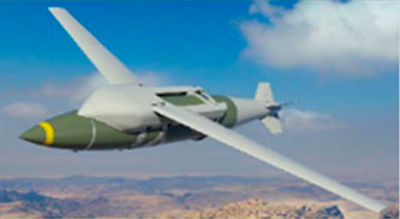
The Quickstrike-ER with JDAM kit.
▶︎ Submarine Launched Mobile Mine (SLMM)
SLMMs are essentially torpedoes that transit to a preprogrammed waypoint, sink to the seabed, and lie in wait like a standard mine. The status of the SLMM inventory is unclear, but after a planned phase-out in 2012, the program was saved by then Chief of Naval Operations Admiral Jonathan Greenert, and an improved version of the weapon based on the Mk48 is said to be under development. According to mine warfare expert Scott Truver, however, "the Navy is repurposing excess Mk67 Submarine-Launched Mobile Mine (SLMM) warheads to make Clandestine Delivered Mines (CDMs) to be delivered by Orca unmanned vehicles." The Navy's FY2022 budget proposal confirms this is the case (3231 - Maritime Mines), but whether this indicates a total conversion and phasing out of the SLMM program is unknown.

The Submarine Launched Mobile Mine (SLMM).
SLMMs are a possibility for XLUUV deployment, but given that they can be safely deployed from manned platforms at standoff range, they would likely be kept in reserve for high-risk wartime operations in highly contested areas.
▶︎ Clandestine Delivered Mine (CDM)
Little is known of the CDM, but it has been under development for at least five years. The one image of a CDM in circulation suggests that it is a standard bottom mine, and, given its small size (roughly 4.5 feet in length, 1.5 feet in diameter), designed for use in very shallow water, or possibly the surf zone.
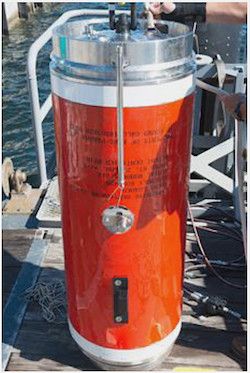
The Clandestine Delivered Mine (CDM).
Naval Surface Warfare Center Panama City Annual reports from 2016 and 2017 indicate that the CDM was undergoing integration testing with the Large Displacement UUV (LDUUV), aka Snakehead. While this suggests that the CDM mission set may be different from the deep water mining for which the XLUUV is designed, this doesn’t necessarily rule out deployment from the Orca. In fact, the Navy's FY2022 budget proposal (PE 0604601N - Mine Development) states that the "Clandestine Delivered Mine (CDM) provides a capability required by Joint Emergent Operational Needs Statement (JEONS) by converting legacy mining systems for delivery by Extra Large Unmanned Undersea Vehicles (XLUUV)."
▶︎ Hammerhead
The Hammerhead is a moored, encapsulated torpedo mine, purpose-built for deployment from an XLUUV. With its Mk54 lightweight torpedo, sophisticated sensors, high-density energy module, advanced processing, and acoustic communication capability, the Hammerhead is designed to deploy to the seabed for many weeks or months, awaiting activation to engage Red submarines. In addition to acting as a kinetic effector, a Hammerhead could, in theory, be employed as a sensor. A minefield of Hammerheads could act as an underwater wireless sensor network that is integrated into the larger “Undersea Constellation” and leveraged for distributed ISR or for Distributed Maritime Operations (DMO). More significantly, however, acoustic communication would enable the Hammerhead to be deployed while inactive and remotely activated at the outbreak of armed conflict, thereby complying with international law regarding the mining of international waters during peacetime.

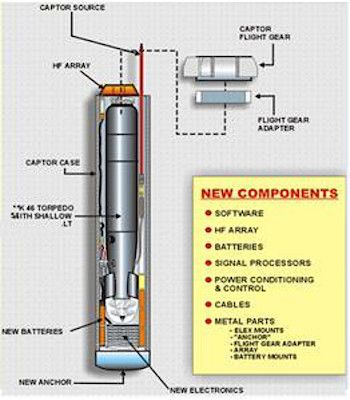
U.S. Navy illustrations of the Hammerhead mine. Note: The illustration on the right features the Mk46 torpedo used in the Hammerhead's progenitor, the Mk60 CAPTOR mine, however the Hammerhead will utilize the Mk54.
At the moment, the development timetables for the Hammerhead and Orca are largely aligned, with the Hammerhead expected to be fielded in 2023, along with the first two (of an initial run of five) Orcas. But given the technological challenges and inherent complexity of autonomous mine laying operations, delays for Orca are likely, and given that the Hammerhead program will benefit from prior art (the Mk60 CAPTOR) and is a Maritime Accelerated Acquisition (MAA), it is possible that the Hammerhead will be fully tested and in production before the Orcas are ready to join the fleet. Would it be possible, then, to lay Hammerheads using manned systems? It would be a highly risky endeavor in time of war. But what if they could be laid in time of peace, without the need for an XLUUV, and without risk to manned platforms? This could be possible by leveraging acoustic communication, Ohio-class SSGNs, the opaque, gray-zone nature of the undersea domain, and international law.
PEACETIME MINING
While the Convention of 1907 Relative to the Laying of Automatic Submarine Mines ("Hague VIII") is the oft-cited legal authority regarding mine warfare, the treaty is narrowly constructed to address floating or moored contact mines - the state of the art in 1907 - that are deployed during wartime. The more relevant interpretation of international law for modern, peacetime minelaying operations - from the U.S. perspective - would be “The Commander’s Handbook on the Law of Naval Operations." Section 9.2.2, Peacetime Mining, reads:
“Controlled mines may...be emplaced in international waters...if they do not unreasonably interfere with other lawful uses of the oceans.”
“Because controlled mines do not constitute a hazard to navigation, international notice of their emplacement is not required.”
Because its acoustic communication capability enables remote activation/deactivation of its warhead, the Hammerhead is a “controlled mine” within the scope of 9.2.2. Of course, even if a Hammerhead minefield was technically compliant, the geopolitical fallout from prepositioning sea mines during time of peace could be severe, particularly if contested maritime claims were involved. Beijing, for example, would likely have little regard for the legality of mines laid along the first or second island chains. And generally speaking, the discovery of mines in nearby international waters, or a Red EEZ, much less territorial waters, would be profoundly destabilizing at best, leading to an "undersea Cuban Missile Crisis," and at worst, a catalyst for armed conflict.
But unlike the Cuban Missile Crisis, where observable, land-based missiles placed within the physical borders of a sovereign nation were publicly exposed using photographic evidence, clandestine undersea mine laying would be extremely difficult if not impossible to detect, much less document and expose in an effort to cause political damage or build a case for war. Even assuming the mines were discovered, would Red choose to reveal their knowledge of them? This would risk exposing intelligence sources and methods, particularly if there is imagery or physical evidence involved. Perhaps Red would simply destroy them – a largely risk-free proposition as the operation would occur far from prying eyes, and Blue would have no real recourse lest they admit to a highly provocative act. Or perhaps Red would note the mines' locations, gather intelligence on their operations, and prepare to neutralize them at the outbreak of armed conflict. Here, the intelligence contest of undersea warfare comes into play, where there is potentially more to be gained through espionage or sabotage than diplomacy or political warfare.
But before such clandestine activities can even take place, the mines must first be laid.
LAYING THE MINES
Assuming the Orca is behind schedule, but Hammerhead development is on time, and there is an urgent need to clandestinely deploy an ASW minefield in advance of armed conflict, how might this be accomplished?
In examining U.S. Navy concept drawings of the XLUUV, one illustration depicts a configuration of twelve angled tubes housed within the vehicle's payload bay. While this may be a concept for the deployment of torpedoes for ASW or counter-UUV operations, it may also indicate a concept for the deployment of Hammerhead mines, as the Hammerhead moors to the seabed vertically, and such a configuration may be necessary to ensure that the mine lands on the seabed in an upright position. Thus, it is reasonable to conclude that the Navy envisions a single XLUUV minelaying sortie to involve at least 12 mines, but given the vehicle's ≈33 foot (10 meter) payload bay, depending on the actual dimensions of the Hammerhead and the payload configuration, the actual XLUUV loadout may be several more, possibly twice as many.

Based on the Navy's Hammerhead illustrations, and knowing that the Mk54 torpedo is 2.72 meters in length, the entire device, to include energy, comms, processing, and mooring module, could be anywhere from 15-19 feet in length. Based on the dimensions of the submarine-deployed CAPTOR mine, which also utilized the Mk54, it will likely be 21 inches in diameter.☨ A USN dry deck shelter is approximately 9 feet in diameter and 38 feet in length, of which approximately 20 feet of hangar (payload space) is available to accommodate approximately 9 Hammerheads. An Ohio-class SSGN has a dual DDS capability, one to accommodate the Hammerhead payload, and the other to provide for diver lockout. In this configuration, the total Hammerhead loadout would be approximately 12, with one dedicated shelter holding 9 units, and the second holding 3 to provide space for diver deployment and recovery.


☨ It should be noted that, given advances in lightweight torpedo technology, the Hammerhead could one day incorporate a very lightweight torpedo (VLWT), which, at only 6.75 inches (17 cm) in diameter (compared to the Mk54 at 12.75in/32cm), would enable a smaller overall unit diameter, and thereby enable a larger number of mines to be housed in a DDS and deployed in a single sortie. While the warhead of a VLWT is smaller than that of the Mk54, coordinated kill box operations could place several VLWTs on target, thereby increasing Pk.
The mines could be deployed from an SSGN operating on or near the seabed, or, if being deployed in deeper water, dropped over the side of the submarine to free fall to the bottom. The Hammerhead's mooring module, as with the CAPTOR, will likely be activated by a pressure sensor, causing it to separate from the capsule at a specific altitude to enable a “soft” landing. The mines could also use buoyancy devices (collars, spheres) or drogues to ensure the weapons land in the proper, upright position.
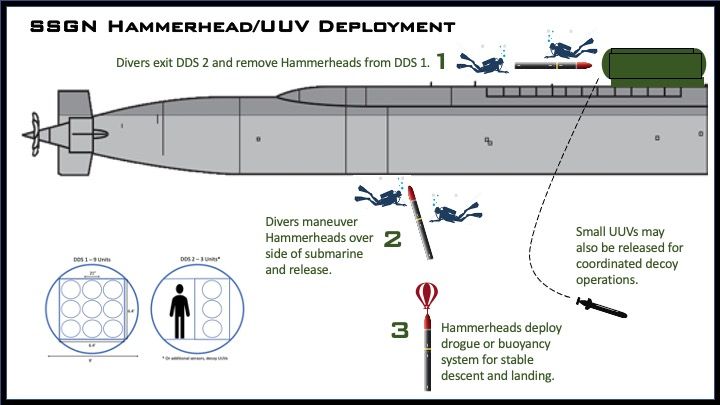
While Hammerhead, like CAPTOR before it, could conceivably be designed to deploy from a torpedo tube, weapon placement would be less precise as the mines (as currently designed) would require ejection from the tube and would not possess any propulsion or navigation capability. There would also be an opportunity cost in terms of weapons loadout. (An Ohio-class SSGN can house 18 weapons in its torpedo room - to include torpedoes, ASCMs, LACMs, and TTLR-capable UUVs - while the Virginia can house 25.) A torpedo tube deployment would also be less clandestine than DDS, as the weapons lack a propulsion system and would therefore not be capable of a quieter, stealthier swim-out launch.
CONOPS & Kill Chains
Hammerheads could be deployed in traditional barrier minefields near known or anticipated adversary operating areas (ports, choke points). But the initial production of the Hammerhead is currently pegged at 30 units, nowhere near the number that would enable the wide area coverage of a large-scale barrier minefield, and full production will take time to come up to speed. In order to increase the probability of kill (Pk), each Hammerhead could team with a small effector that lures a Red submarine into its weapon engagement zone (WEZ) - a decoy UUV equipped with an acoustic emulator that mimics the sound of a Blue submarine. DARPA is exploring a related concept with its Transformational Reliable Acoustic Path System (TRAPS), a seabed sensor that teams with a UUV (SHARK, Submarine Hold At RisK) to detect and prosecute enemy submarines.
Taking into consideration factors such as a limited inventory of Hammerheads, and the range of Mk54, there are two possible concepts of operations (CONOPS) - a dispersed barrier minefield, or more structured kill boxes
▶︎ Barrier/Dispersed (1v1)
Hammerheads could be deployed in traditional barrier minefields designed to bottle up Red boats inside their ports, or to deny them access to Blue operating areas.
Detect
Once the Red submarine is detected by the Hammerhead's onboard sensors (acoustic, magnetic, pressure), it transmits an activation code to an orbiting UUV, which begins emitting a Blue acoustic signature.
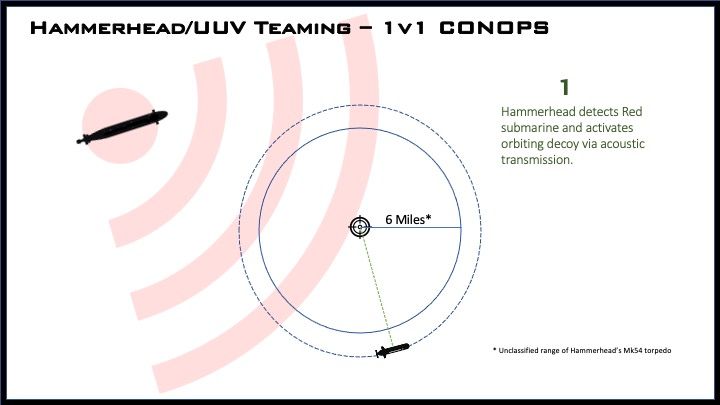
Deceive
The Red submarine passively detects the decoy and turns to begin a track and prosecute the target. The decoy moves away from the Hammerhead on a similar course in order to draw the submarine as near to the mine as possible.

Track
At a range of approximately six miles, the enemy submarine enters the Hammerhead's WEZ and the mine begins plotting a firing solution. The Hammerhead must wait until the submarine is sufficiently inside the WEZ to close the range, and to ensure that it will be unable to effectively counter or evade when it detects a Hammerhead launch.

Engage
Once fully in range, the Hammerhead launches its Mk54 torpedo. With a speed of approximately 40 kts, it quickly intercepts and kills the Red submarine.
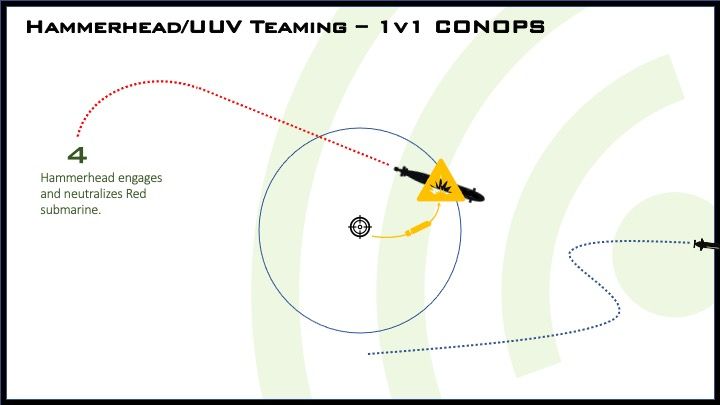
▶︎ Kill Box / 4v1
The most efficient way to deploy Hammerheads would be in structured kill boxes designed to maximize the limited number of the weapons available, while leveraging their range, advanced sensor and communication capabilities, and operating depth.
Deploy
The XLUUV transits to operational area and deploys Hammerheads, seabed sensors, and a decoy UUV. Alternatively, the XLUUV itself could remain in-situ to act as decoy.
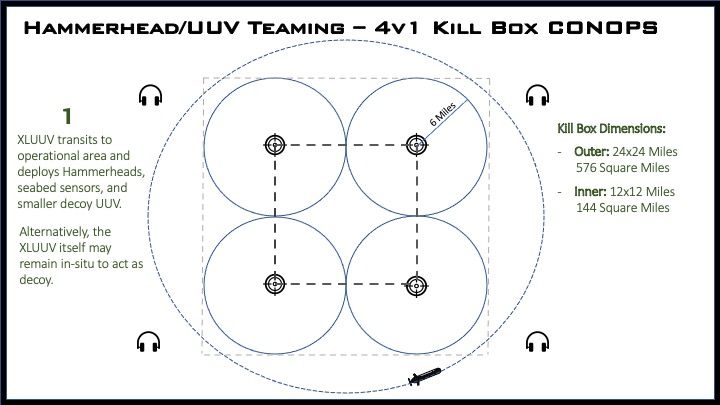
Detect
Perimeter sensors and/or Hammerheads detect the Red submarine. Using low probability of detection burst acoustic transmissions, the Hammerheads coordinate the engagement with each other and the orbiting UUV.

Deceive
The Red submarine detects the decoy UUV's signature and begins to track. The Hammerheads and/or UUV may alert additional Blue ASW assets via burst acoustic transmission that is relayed by a surface comms node, such as a buoy, surfaced UUV, or wave glider.
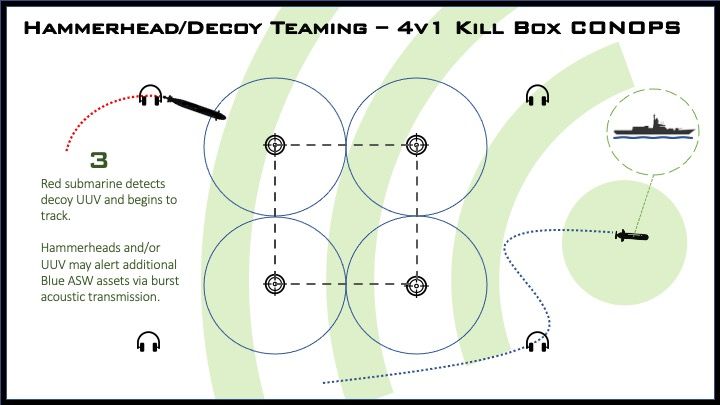
Track
The decoy UUV plots a course that will draw the Red submarine into the Hammerhead inner kill box. Note: several Red trajectories are possible. To increase Pk, the UUV and Hammerheads could use onboard AI/algorithmic processing to generate an optimal attack pattern based on a wide range of variables.

Engage
The Hammerheads engage the Red submarine utilizing an AI-generated attack model.

OPERATIONAL CHALLENGES
While the Hammerhead will enjoy several technological advantages over the Mk60 CAPTOR, there are still significant challenges involved in deploying Hammerhead minefields, whether in peacetime or in war.
Communications
The acoustic communication capability of the Hammerhead, while a potential gamechanger from an operational standpoint, is a double-edged sword. Remote activation and control enables it, in theory, to comply with UNCLOS and Hague VIII. However, acoustic communications are overt, and adversary sensors will be capable of detecting them over long distances. One-way (surface to seabed) comms could enable an adversary to infer the presence of Hammerheads (which could work in the USN's favor for deception operations), but given the great distances acoustic transmissions can travel, it would be highly unlikely an adversary could pinpoint a location based on one-way comms. Two-way comms, however, could alert an adversary to the weapon’s location, making it a target for a kinetic strike. This is particularly challenging, then, if the Hammerheads are being used as sensors during peacetime operations, making it difficult to exfiltrate data for additional analysis. Moreover, activation would likely require some kind of "handshake" to authenticate the transmission and confirm that it has been received and its instructions carried out.
Energy
While Hammerhead onboard energy modules could potentially operate for several months on a single charge, recharging or replacing the modules would be resource intensive and logistically challenging. It is possible that groups of Hammerheads or individual kill boxes could be wired to an external seabed energy source, such as a large lithium-ion battery, or even a small nuclear reactor. (Russia, for example, is said to be developing mini nuclear reactors to power its Arctic seabed operations, including deep sea mining and a SOSUS-style sensor network.) But precise delivery of both Hammerhead mines and an integrated energy system would require a deep-diving manned submersible with a large payload bay and robotic systems capable of deploying such infrastructure. The USS Jimmy Carter, with its Multi-Mission Platform, would be suited to such a task, hovering near the seabed and using ROVs to deploy the mine package, and to connect the mines to the power source.
The accompanying decoy UUVs would also require periodic recharging. To solve this problem, the vehicles could lay dormant on the seabed to await activation, or be deployed while moored to its own seabed charging station.
Range
The unclassified range of the Mk54 torpedo is roughly six miles (10 km). A longer range torpedo would enable the Hammerheads to be deployed over a larger area and provide wider coverage. Improvements in range/endurance could come from electric propulsion, but possibly at the expense of speed. Electric propulsion would also pose an additional drain on the Hammerhead's energy module.
Countermeasures
Much as decoy effectors could be used to lure enemy submarines into the Hammerhead's WEZ, the same technology could be applied to defeating the Hammerhead or similar encapsulated torpedo mines. Deployed from torpedo tubes, decoys could be sent well ahead of transiting manned submarines, emitting acoustic or magnetic signatures which are designed to trigger enemy mines.
IMPLICATIONS
The shadowy, gray zone nature of undersea warfare, coupled with advancements in UUV navigation, communications, energy, and autonomy, could enable, if not fully incentivize, peacetime mining operations.
Until recently, the long-term, peacetime deployment of sea mines in international waters would have been logistically impossible, if not illegal, but with advancements in key technologies, this is no longer the case. While largely clandestine in nature, offensive mining, if properly executed, could be an effective gray zone instrument to signal national resolve. An aggressive and provocative one, to be sure, but one that could potentially deter adversaries by imposing costs, and/or provide a significant operational advantage should armed conflict occur. Signaling resolve, however, requires just that – signaling, which is what we were witnessing with Admiral Kilby's remarks.
The Hammerhead is one step away from a fully mobile, autonomous mine, and a precursor to autonomous undersea conflict.
Replace the mooring module with a propulsion system, the Mk54 with a warhead, and provide an integrated navigation and C2 system, and the Hammerhead is now an autonomous underwater vehicle capable of using acoustic comms to self-organize and collaboratively detect, classify, and engage subsea targets - i.e. a smart, mobile mine. And as increasing numbers of such vehicles and related infrastructure make their way into the opaque subsea domain, there will be a increasing need for counter-UUV and seabed strike capabilities.
Red is actively embracing offensive mine warfare, and also possesses rising or encapsulated torpedo mines. We can assume that extensive Red R&D is ongoing, and that similar operations and tactics as those outlined above could also be employed against Blue submarines.
This report has focused on the operational and tactical dimensions of the U.S. Navy's Hammerhead encapsulated torpedo mine. It should be noted, however, that U.S. adversaries are in possession of similar mines, and will likely develop related technologies, CONOPS, and tactics, either through indigenous R&D, COTS acquisitions, or espionage operations. China’s EM-52, for example, is a rocket-propelled straight rising mine that reportedly can travel 80 meters per second, which could also be fitted with advanced energy and comms capabilities. As could the Russian PMK-2, a CAPTOR/Hammerhead-style encapsulated torpedo mine capable of deployment in very deep water (and also in the PLAN inventory).

